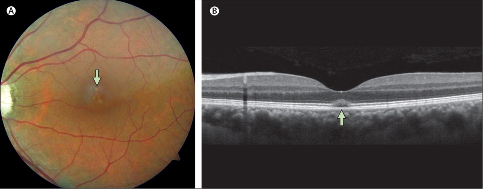Being left alone helpless to enjoy your bondage is a common fantasy among kinksters. It’s the ultimate form of consensual non-consensuality: there’s no way out, if there’s nobody there to release you.
We all know the fundamental rule of BDSM is to never leave your sub alone in bondage. But this begs the question: how dangerous is it to actually leave a person alone?
External causes of danger
If we forget the complications of bondage itself, and focus on external dangers that could kill or injure your sub, the numbers are pretty clear: any external danger is ridiculously low.
Fire and burglary are the main external dangers. According to FEMA, there are approximately 380 000 household fires annually in the US, and according to FBI, about 1.5 million burglaries. As there are about 125 million households in the country, the risk of having a fire in a residence in the US in any 8 hour period is approximately one in 360 000, and a burglary one in 240 000 (it should also be noted that if your burglar sees a slave in a cage, he’ll most likely flee: only 7% of US burglaries happening while house is occupied result in any violence).
Other causes of household danger are far lower than fire and burglary, so it’s clear that your house will not destruct itself while you are away unless you are extremely unlucky.
For perspective, the average risk for an American 40 year old male dying in the next 8 hours is one in 490 000, according to the Social Security Actuarial Table. This increases to one in 95 000 if you’re 60 years old, so when you are playing with an old top, him keeling over and dying is much more likely than a catastrophic fire.
Physical causes of danger
Bondage itself is dangerous. Any form of constriction around the neck or head can cause death in two ways: asphyxiation (not getting enough oxygen), and the vasovagal response (constricting the neck, resulting in a reflexive crashing of blood pressure). These risks depend on the kind of bondage, so it’s best to stay away from the head and neck area.
Even if the head and neck area is completely free, constriction around the chest area may cause positional asphyxia, where the sub is unable to breathe properly due to exertion required to physically breathe. This is usually caused by the sub being on his stomach, as in a hogtie.
What if the neck and head of the sub is free, and there is no significant pressure around the chest area? It’s pretty difficult to kill your sub. Other dangers are also present, but generally nonlethal.
Too tight bondage in any part of the body causes two kinds of damage: circulatory and nerve damage. These are significant, because if a top is present in a scene, any problem can be quickly fixed, but if you are alone, there’s nobody to help and things can go wrong quickly.
Circulation problems
Circulatory problems result in tissue not getting enough blood due to position or constriction. Lying immobile, bed sores can form as quickly as 2 hours when a static position prevents free circulation. In legs and arms, tight restraints can result in loss of circulation and progress to ischemia and eventually gangrene in a matter of hours. There’s also a danger of blood clots.
Circulatory problems will eventually cause nerve damage (which is often permanent) due to nerves not getting enough blood, but nerve damage can happen sneakily by itself as well.
Nerve damage
Pressure in incorrect places, or unsustainable positions, will damage nerves directly. In mild cases, the myelin sheath around a nerve is damaged, resulting in damage which heals by itself. This healing can take up to 6-9 weeks, but often happens in a matter of hours. More serious damage affects the nerve itself, resulting in damage that can take months to years to fully heal.
Nerve damage usually has symptoms (pins and needles, progressing to numbness), but occasionally it’s symptomless until the damage has been done.
Psychological dangers
People react unexpectedly when they are left alone. Panic attacks are a real risk. While a panic attack itself is not dangerous, its symptoms can be. Uncontrollable struggling may result in bondage or equipment failing, suddenly changing the situation.
Vomiting is a dangerous symptom of a panic attack, especially if the sub is in a vulnerable position. Any gag or obstruction in the mouth while vomiting will most likely result in death through asphyxiation, or at least aspiration pneumonia when vomit gets inhaled into the lungs.
Prolonged or intense fear can cause long-lasting psychological symptoms, of which most famous is PTSD, post-traumatic stress disorder. This may be destructive for any future kink.
Should you do it?
As a sane adult (I hope), that’s for you to decide. There are ways to mitigate risk when it comes to leaving someone alone in bondage:
- Do not use gags or hoods, or do head bondage, that obstruct with breathing or vomiting in any way
- Do not do any bondage around the neck, and be conservative with any bondage around the chest area
- Be careful with any pressure points, give the sub enough movement to be able to move around to avoid undue constant pressure
- Do not leave subs that have a history of panic attacks or related psychological issues alone
As with anything, it’s impossible to remove all the risk. Being alone in bondage is a big fantasy for many people, but focusing on the details, you can make it as safe as you can.
Isn’t this irresponsible? You should be saying ‘never leave a sub alone!’
BDSM is always potentially a lethal activity, and we take a calculated risk when we get tied up. If we lived in a world of moral absolutes, you shouldn’t be doing bondage at all, since there is no way to guarantee the safety of your sub even when you are 100% present. People will leave their subs alone, bareback, and smoke weed, along with other things you consider morally abject, and to condemn everything simply prevents real information from getting through.
There are stupid ways of leaving your sub alone, and relatively safe ways of doing the same. It’s your call which one you pick.


